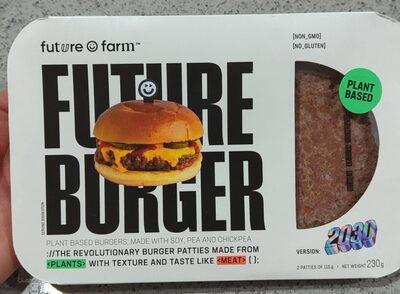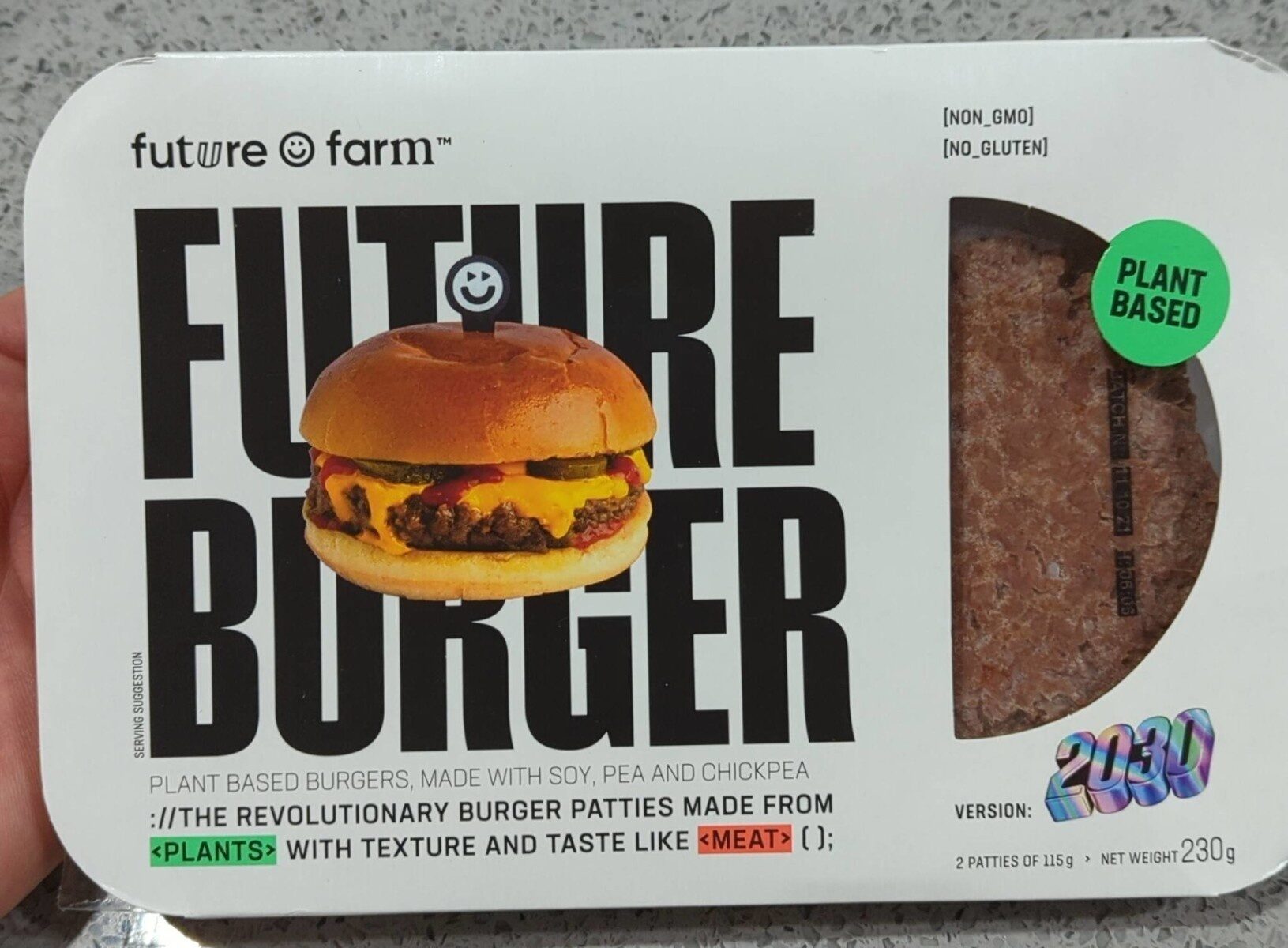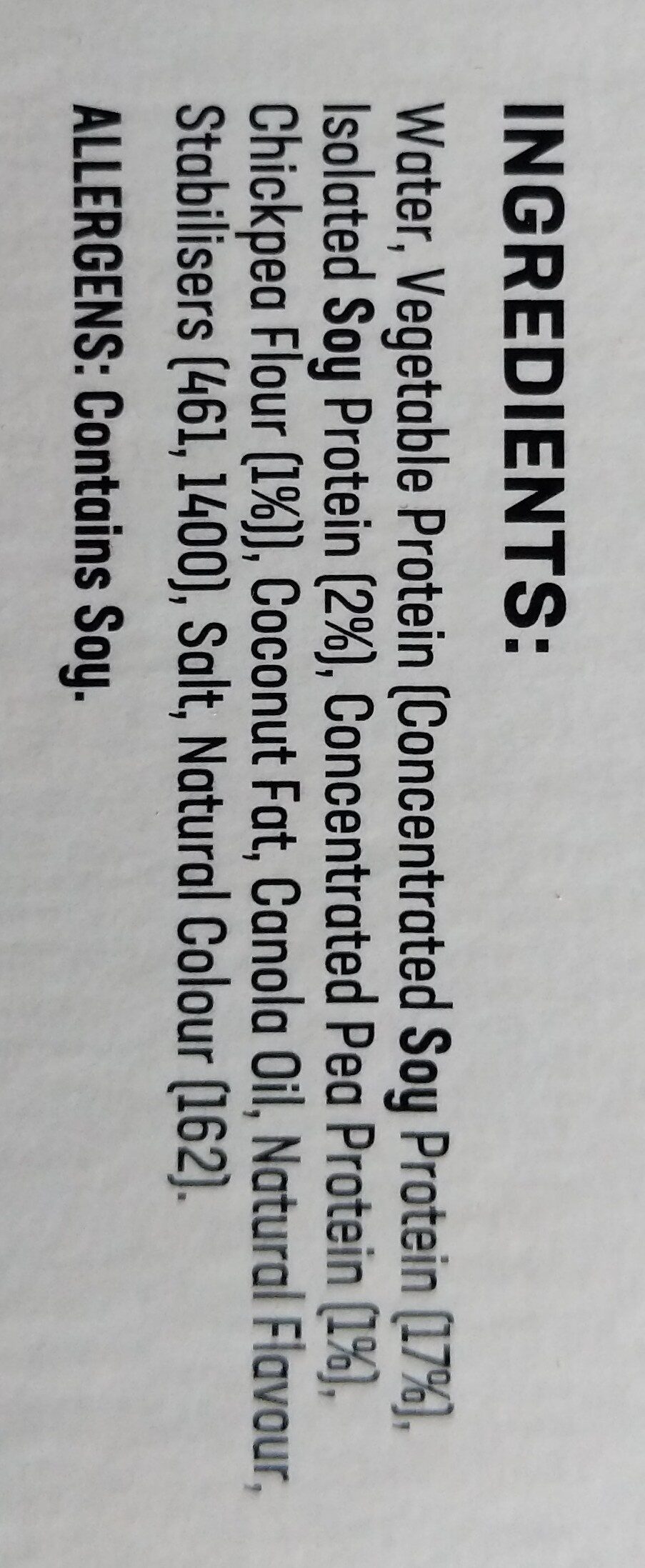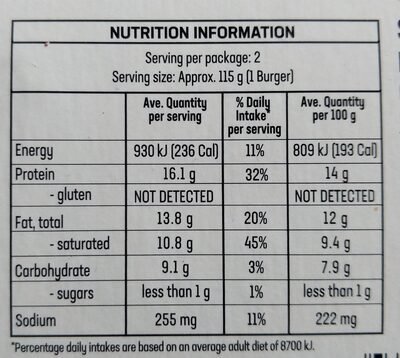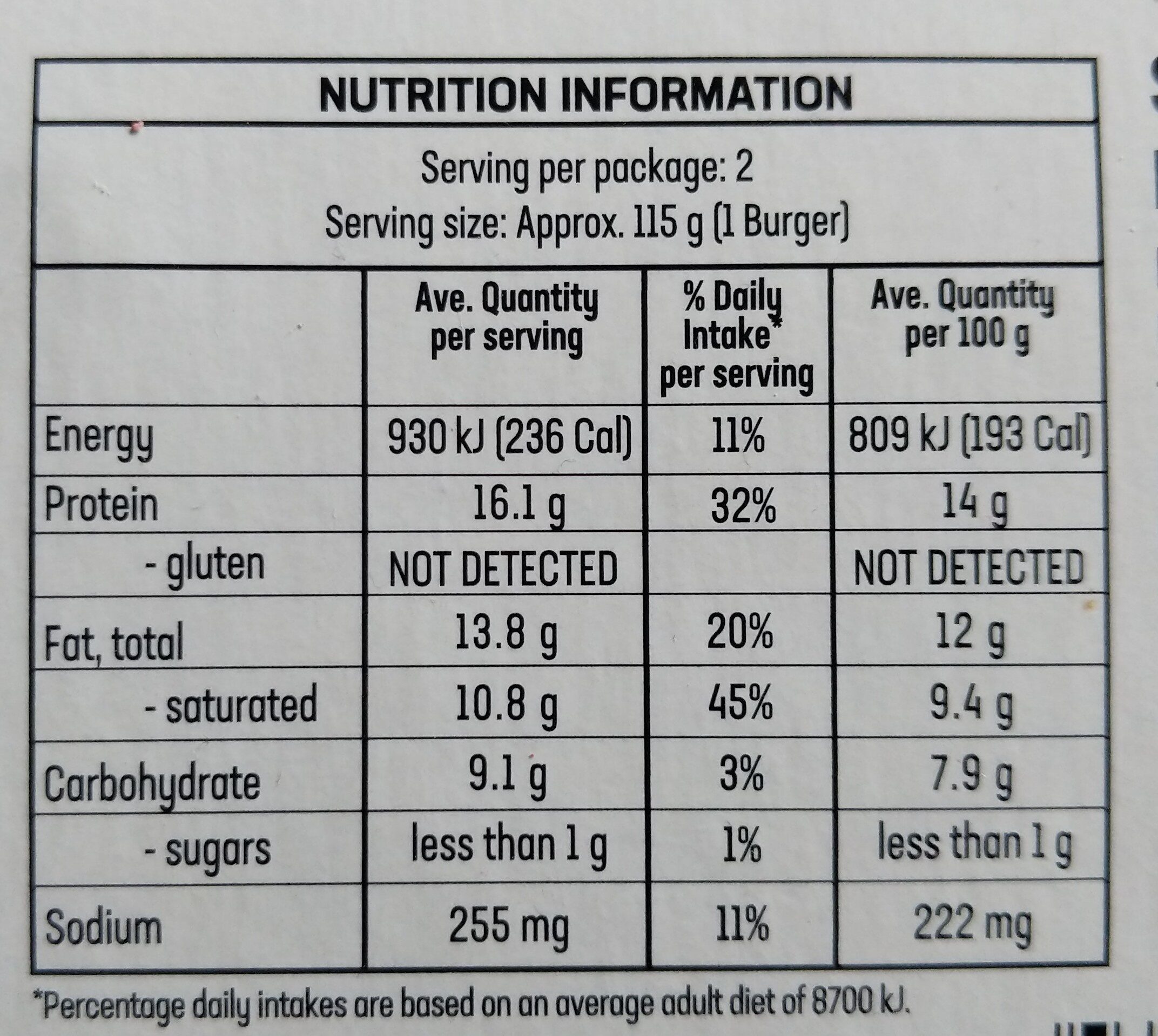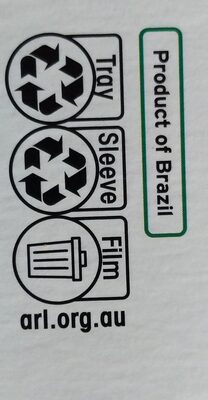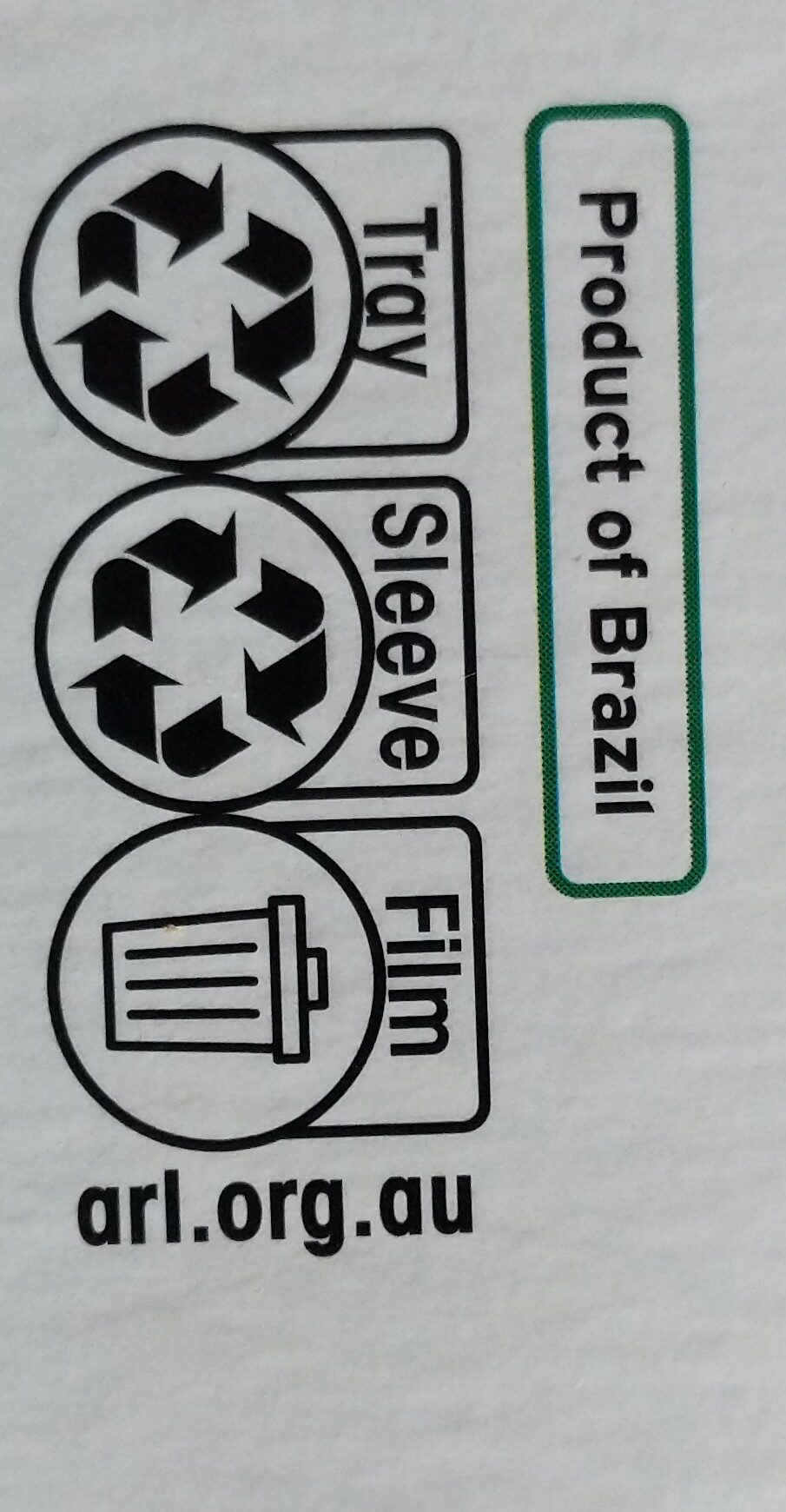Future Burger - Future Farm - 230 g
Barcode: 9369998331321 (EAN / EAN-13)
Quantity: 230 g
Brands: Future Farm
Categories: Plant-based foods and beverages, Plant-based foods, Fresh foods, Fresh plant-based foods
Labels, certifications, awards:
No gluten, Vegetarian, No GMOs, Vegan, Non GMO project
Origin of ingredients: Brazil
Countries where sold: Australia
Matching with your preferences
Report a problem
Data sources
Product added on by kiliweb
Last edit of product page on by trolley.
Product page also edited by roboto-app, yuka.sY2b0xO6T85zoF3NwEKvlnMab_vX_hCcEk3jw2zb1N6sAbnXOeh859nmOqs.
If the data is incomplete or incorrect, you can complete or correct it by editing this page.
